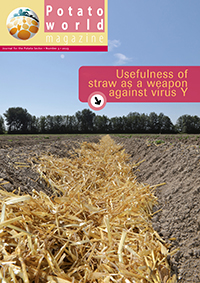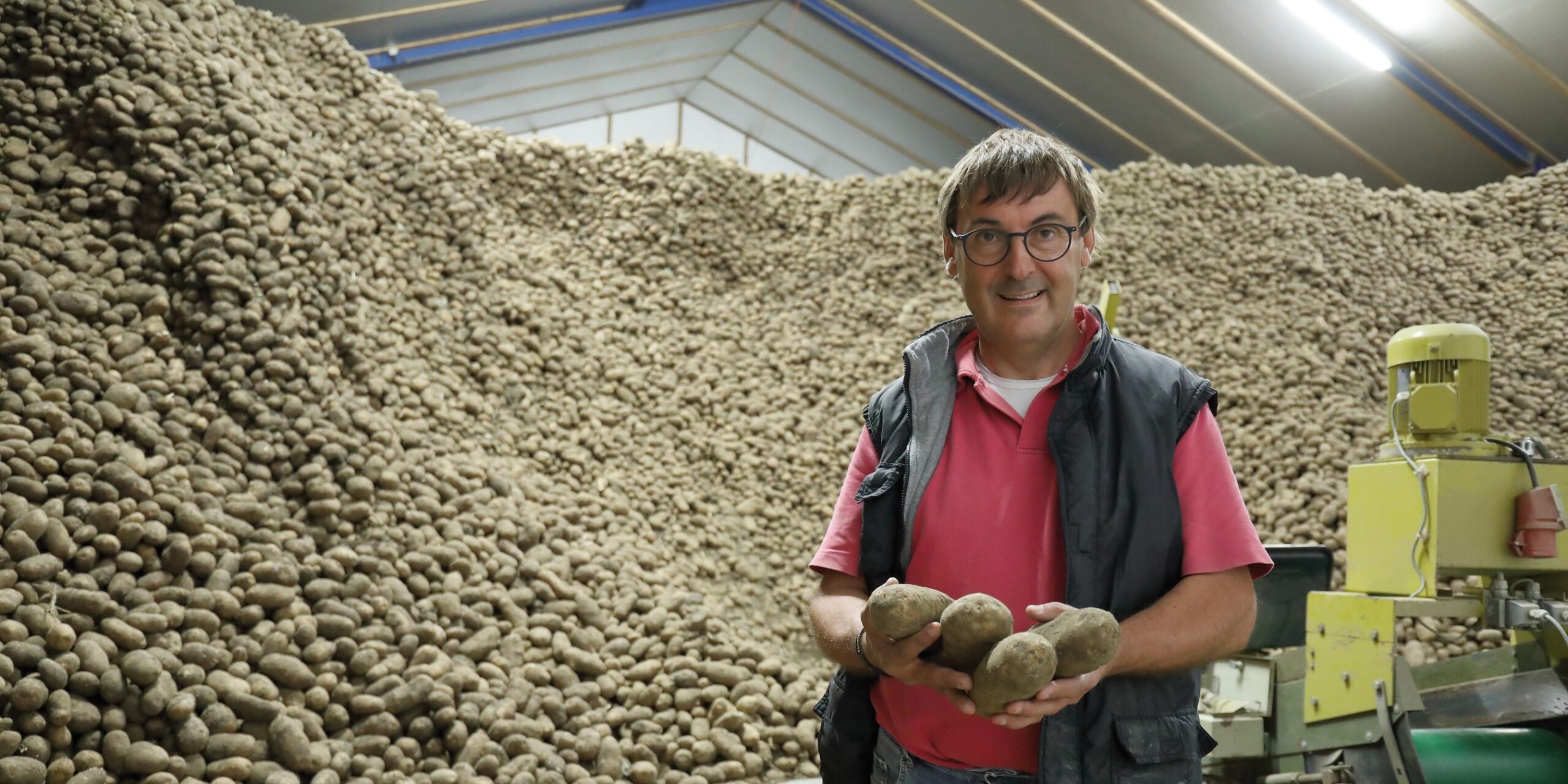Already a subscriber? Activate your premium account

Potatoworld Magazine

In Europe, the European Commission has decided that potato growers are no longer allowed to use Chlorpropham in the storage of potatoes. This ban on the product used for decades to store ware and starch potatoes is a real game changer in the European potato sector. Bert van Putte from the village of Swifterbant shares his initial experiences with the new agents that best suit the variety, cultivation purpose, available finances and storage conditions.
As early as in the year 2016, potato grower Bert van Putte from Swifterbant chose 1.4SIGHT. He has accumulated a great deal of knowledge and experience over the years. ‘1.4SIGHT isn’t really a sprout inhibitor, but a dormancy extender. This means that growers have to start applying it four weeks after the harvest in order to achieve the best storage results’, says the enthusiastic potato grower.
Internal sprouting a well-known problem
Glad to see them go, is Van Putte’s reaction at the end of May, standing next to the remainder of the heap of Innovator potatoes. Not such a strange sentiment in this corona era in which growers sometimes had to wait and see if and when their product would leave the storehouse. The 800 tons of French-fry potatoes that Van Putte sells through the APF Holland pool, which are destined this year for the German processor Agrarfrost, have, as in recent years, been kept without mechanical cooling until the end of May in the modern storehouse, built in 2013. This is partly due to the duo of sprout inhibitors from MH and 1.4 SIGHT, he says enthusiastically. The introduction to the combination of the latter two started five years ago. ‘We always used Chlor-IPC and Innovator is sometimes less able to cope with that. A well-known problem is internal sprouting. We used to have problems with that in the previous years. There were already trials with the 1.4SIGHT in those days. I met a storage advisor that year and told him about the problems with internal sprouting. He said: ‘that new 1.4SIGHT might be just the thing for you’. We tried it for the first time with the 2015 harvest and we delivered the Innovator completely without any inner sprouts and with less weight loss. I think that you should not look at what it costs, but rather use the power of the product. We adjust our risk profile accordingly.’
Dormancy extender
That’s not to say that working with a new product was flawless from the start. ‘What we discovered, for example, is that it is better to treat the potatoes with the MH sprout inhibitor in the field beforehand. Then they’re less eager to sprout during storage, and you don’t have to start with a high dose of 1.4SIGHT. We also discovered that it’s important to start on time especially at the very beginning of the storage period. And then build it up, which means timely, regular repeat applications of a low dosage. So, rather four times with 10 millimetres per ton at short intervals than twice with 20 millimetres per ton at long intervals. Look, ‘1.4SIGHT isn’t really a sprout inhibitor, but a dormancy extender. This means that growers who still think in the old sprout inhibiting way, where they started to apply sprouting inhibitors when the first sprouts appeared, now have to apply a new strategy when they use 1.4SIGHT’, Van Putte points out. ‘We took lots of skin samples during the trial period. We saw that the concentration of the product started to build up step by step after a number of treatments with relatively low doses. Participating in such trials is very instructive, because only then do you experience how a product really works in the potato’, was Van Putte’s experience.
For this series, PotatoWorld’s Jaap Delleman and Leo Hanse have written up stories of European growers storing potatoes without Chlorpropham.
Events
©2015 - 2024 Potatoworld | Webdesign and realisation COMMPRO